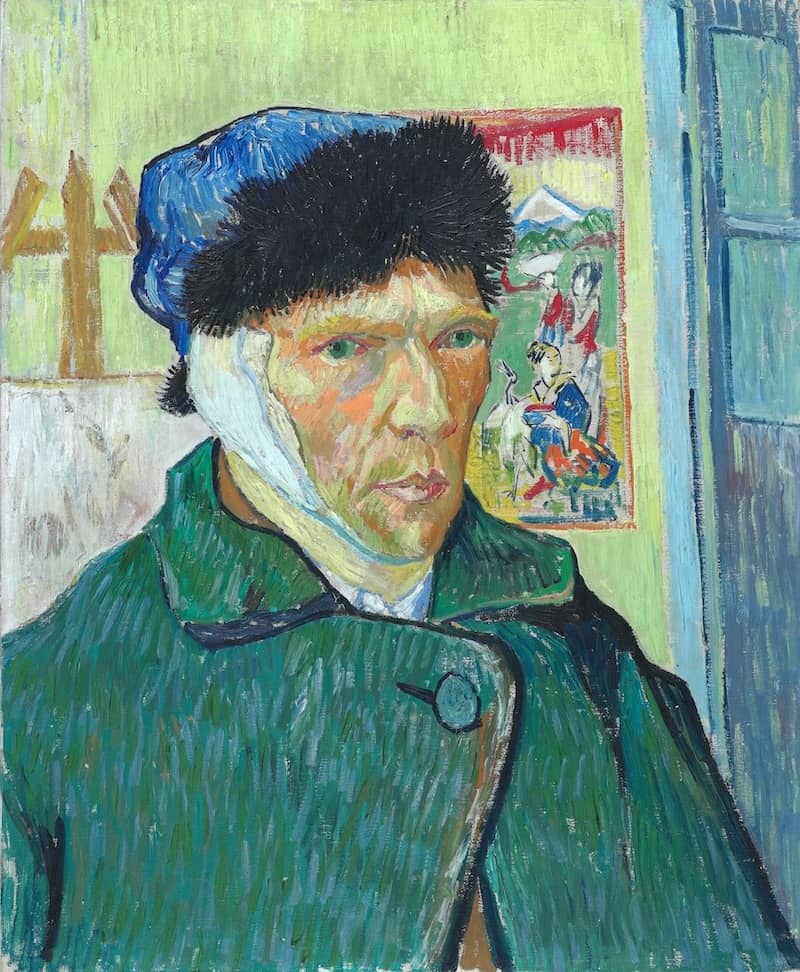The Real Story of Vincent van Gogh's Severed Ear

Vincent van Gogh's legacy is more than his considerable influence on the direction of Western art. It extends beyond his visionary Post-Impressionistic collection of paintings. The artist's impulsive act of self-mutilation just before Christmas in 1888 is a key part of the Van Gogh legacy, and new theories regarding what really happened that dark night in Arles, France, continue to fuel an ongoing controversy.
The Arles Experiment
Early in 1888, Van Gogh moved to the south of France where he rented the so-called Yellow House in the town of Arles. There, he created his well-known
Sunflowers paintings as well as nearly 300 other artworks.
At Van Gogh's invitation, Paul Gauguin arrived in Arles in October 1888. The two painted side by side in the Yellow House for nearly nine weeks. Their
relationship was sometimes companionable but often volatile, with Gauguin frequently on the verge of returning to Paris. Matters came to a head on December 23 when the two men quarreled, and
Van Gogh ended up with a severed ear and a trip to a nearby mental institution.
The Official Narrative
The widely accepted story of Van Gogh's severed ear is that during the quarrel that night, Gauguin stormed out the house. In a fit of madness, Van Gogh grabbed a straight razor and followed, intending his friend harm, but returned home instead. There, he used the weapon on himself, slicing off one ear. He wrapped the wound and delivered the appendage to a maid at the town brothel. In the morning, the police had him taken to the hospital. Gauguin subsequently packed his bags and left for Paris.
Alternative Theory: Gauguin Did It
One alternative narrative, put forth by Hans Kaufmann and Rita Wildegans in their 2009 book, "Pact of Silence," postulates that Gauguin disfigured his friend with a sword. Basing their theory
on passages in Van Gogh's letters to his brother, Theo, they suggest that the two artists agreed never to mention the matter further.
However, as Van Gogh Museum curator Louis Van Tilborgh points out, the authors provide no consistent evidence to support their theory. Others argue that the cut sustained by Van Gogh was too
precise to be dealt by a quick slice of a rapier in the dark, and that no such weapon was ever recovered.
Alternative Theory: Theo's Upcoming Marriage Was the Catalyst
Another alternative explanation accepts that Van Gogh sliced off his own ear, but questions the artist's motivations. In his 2016 book, "Studio of the South: Van Gogh in Provence," author Martin Bailey speculates that news of his brother Theo's engagement set off Van Gogh's self-destructive episode. He asserts that Theo Van Gogh was Vincent's principle means of both financial and moral support, and his announcement caused the artist considerable distress. However, Bailey is unable to corroborate the date that Vincent received Theo's announcement. Additionally, Van Gogh does not congratulate his brother until a letter dated January 19, suggesting he may not have received the news until later.
Caught In the Eye of the Storm
While scholars will continue putting forth various theories that seek to expose the true story of Vincent van Gogh, Paul Gauguin, the Yellow House and the severed ear, the truth is likely to
be some combination of actual events, theories and speculation. Contributing factors include:
1. In his letters to Theo, which comprise the principle window into the artist's mental state, Van Gogh expresses evidence of possible depression, psychosis and bipolar disorder.
2. During his tenure at the Yellow House, Van Gogh experienced a marked period of feverish intensity and produced a prolific amount of art, which tested his creative limits.
3. His love/hate relationship with Gauguin and repeated threats of Gauguin's departure caused Van Gogh extreme distress.
4. Theo's engagement exacerbated Vincent's financial worries and insecurities about the future.
The combination of all these stress factors could well have pushed Van Gogh beyond reason to an impulsive act of self-mutilation. This general explanation fits in with the myth of the tortured
artist, but it also represents a very human reaction, albeit taken to the extreme.




















